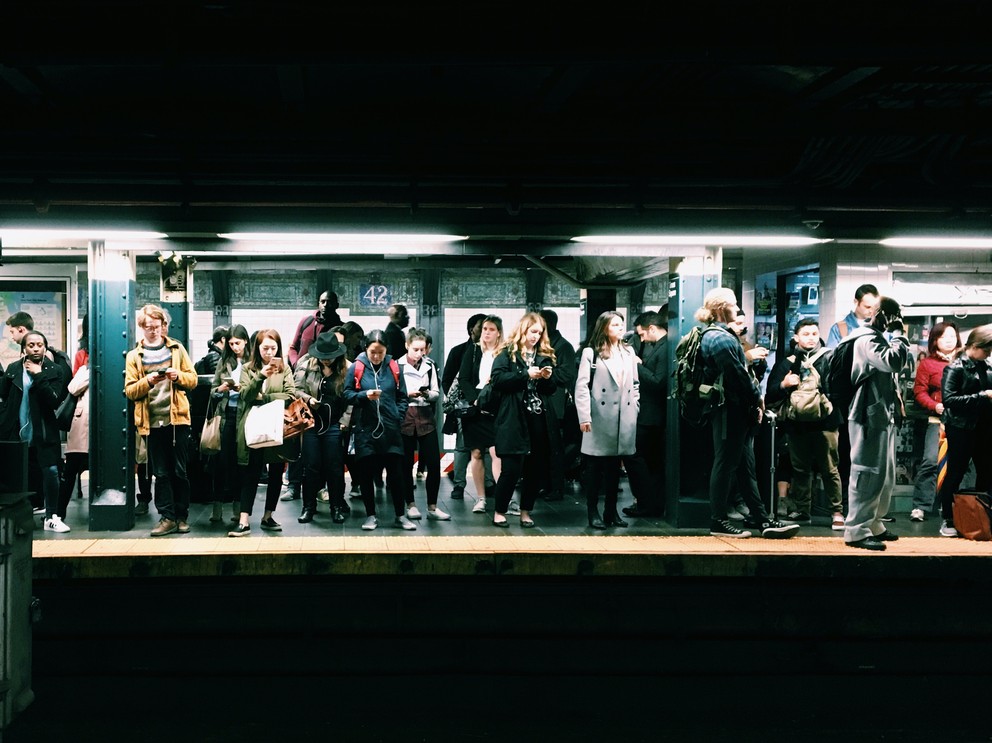
Researchers at Penn State aim to help minimize the risk of COVID-19 spread by identifying specific subway stations in which intervention resources — such as setting up testing sites, allocating additional personnel to disinfect frequently touched surfaces in subway stations, and distributing masks and hand sanitizer — could be of greatest benefit. IMAGE: EDDI AGUIRRE, UNSPLASH
Researchers aim to help cities prioritize interventions for public transit
Posted on June 10, 2020UNIVERSITY PARK, Pa. — The New York City Subway — which, under normal circumstances, serves 5.5 million riders daily — resumed service June 8, amid concerns from residents about exposing themselves to the closed, crowded conditions that could be ripe for coronavirus transmission. Researchers at Penn State aim to help minimize the risk of COVID-19 spread by identifying specific subway stations in which intervention resources — such as setting up testing sites, allocating additional personnel to disinfect frequently touched surfaces in subway stations, and distributing masks and hand sanitizer — could be of greatest benefit.
“Human mobility, including the movement of public transit users, can play a significant role in the spread of infectious diseases like COVID-19,” said Ashkan Negahban, assistant professor of engineering management, Penn State Great Valley. “In today’s world of hyper-connectivity, the actions of public transportation system officials and riders in any city can have dramatic impacts on the outbreak worldwide.”
The team has created an online dashboard to help New York City and other city officials prioritize different communities and subway stations for the allocation of intervention resources.
The team’s dashboard will comprise an integrated vulnerability measure, which they are calling a Mobility and Epidemic Vulnerability Index (MEVI), that takes into account subway usage and commute patterns in New York City, as well as population- and health-related factors, such as household size and prevalence of cardiovascular diseases, diabetes, and other relevant pre-existing health conditions.
“The key novelty in our proposed vulnerability measure is that it assigns a risk score to a community not only based on the health conditions of its residents, but also based on where its residents travel outside of the community and who travels into the community,” said Negahban. “This sets our work apart from other vulnerability measures that have been proposed or are in use.”
“Given limited resources, the critical question is which neighborhoods and subway stations should be prioritized for resource allocation to maximize public health impacts,” he said.
The team’s preliminary analysis suggests that the subway stations that should receive highest priority for interventions are Myrtle-Wyckoff Avenues and 86th Street stations in Brooklyn, and 34th Street-Penn Station in Manhattan.
In addition to New York City, the dashboard can be adapted for use in other cities.
Negahban said, “Our goal is to help cities make informed and effective decisions related to interventions and control strategies in their public transportation systems for the ongoing COVID-19 pandemic, as well as other future infectious disease outbreaks.”
Other Penn State collaborators on this project include Mohamad Darayi, assistant professor of systems engineering; Ottar Bjornstad, chair of epidemiology and distinguished professor of entomology and biology; and Robin Qiu, professor of information science. Viswanathan Sivaram, a graduate student in data analytics, and Connor Speir, an undergraduate student in computer science, serve as research assistants.
This research project is supported by a seed grant from Penn State’s Institute for Computational and Data Sciences as part of the University’s COVID-19 Research Seed Grant Program led by the Huck Institutes of the Life Sciences.
by Sara LaJeunesse
